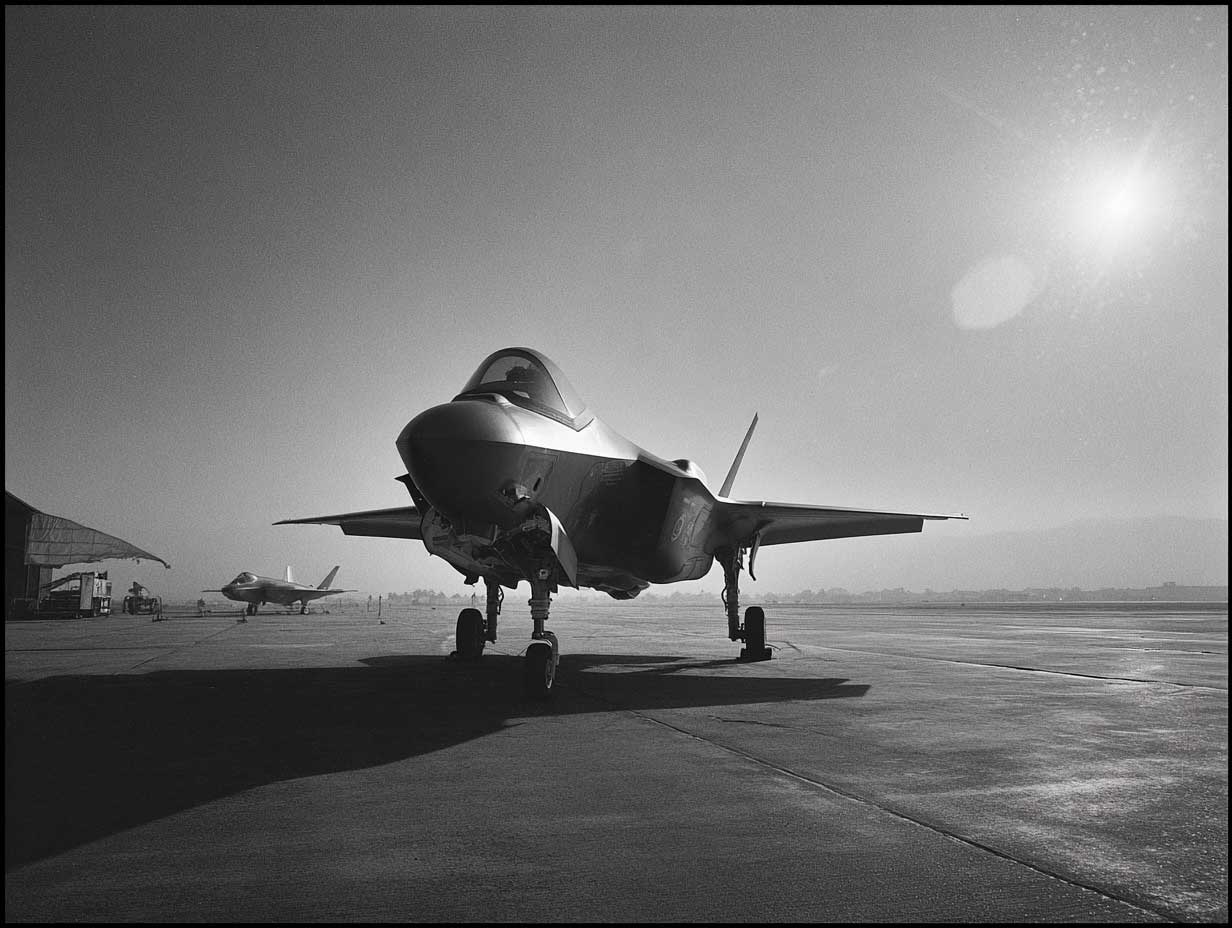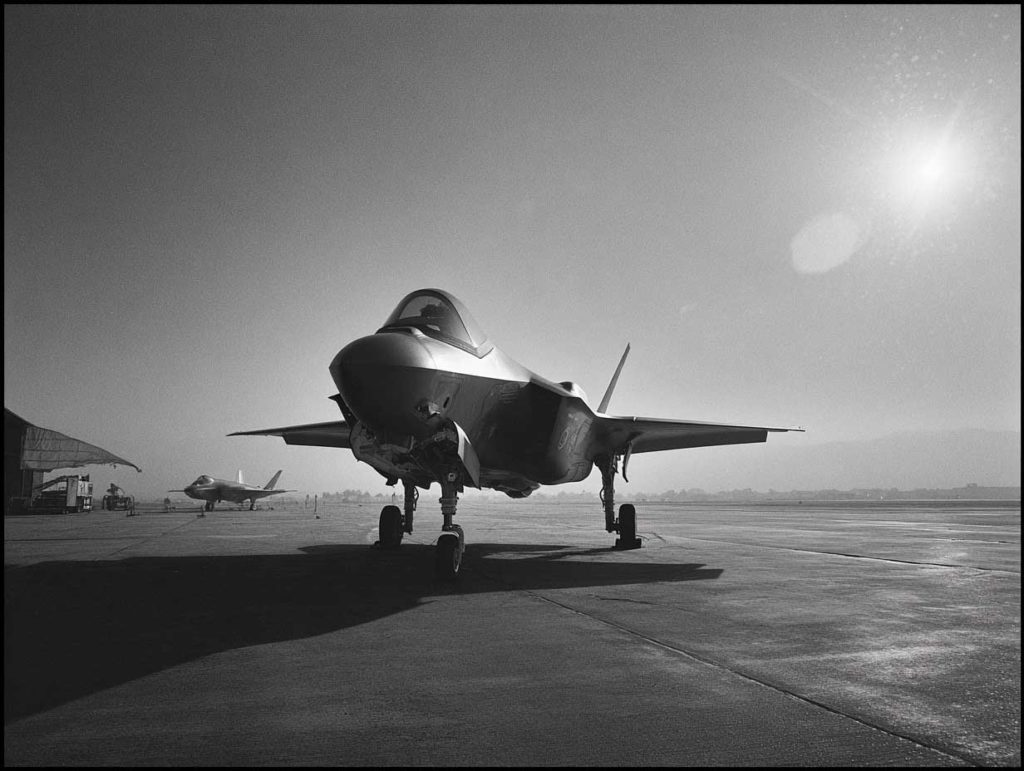
10 Jul British F-35B grounded in India after emergency weather landing
A Royal Navy F-35B is stuck in Kerala since June 14 due to hydraulic issues. UK engineers in India to repair ₹90M jet amid diplomatic layers.
On June 14, a Royal Navy F-35B fighter jet from HMS Prince of Wales made an emergency landing at Thiruvananthapuram International Airport in Kerala. The jet was performing a routine sortie over the Arabian Sea when extreme monsoon conditions and low fuel forced a diversion. Valued at approximately €90 million (US \$115 million), the aircraft ran into hydraulic failure after refuelling attempts, preventing safe return to the carrier. For more than three weeks, it remained under 24/7 guard by Indian personnel and UK engineers, while the jet became a focal point of local media and a playful Kerala tourism campaign. Over time, UK Ministry of Defence dispatched a team of 24–25 specialists to Thiruvananthapuram aboard an RAF A400M Atlas to assess and repair the jet, then placed it into an MRO hangar . This stalled mission raises technical operational issues and diplomatic considerations amid growing UK‑India defence ties.
The technical snag and operational context
The F-35B’s unplanned landing resulted from a hydraulic system failure after attempting to regain carrier approach at HMS Prince of Wales. The aircraft declared a Squawk 7700, signaling general emergency, and diverted to the pre-defined recovery field at Thiruvananthapuram. Hydraulic systems on F‑35B control flight surfaces and landing gear; failure can result from pump malfunctions, line damage, or actuator faults. On-site inspections by carrier engineers failed to restore operability, necessitating specialist assistance. The jet was initially parked in Bay 4—a VIP/large aircraft area that delayed hangar transfer until UK tools arrived.
The UK deployed a team of around 24 engineers, including F-35 manufacturer specialists, arriving aboard an RAF Airbus A400M on July 6–7 . They moved the aircraft into Air India’s MRO hangar for diagnostics. This process involved towing the jet with a purpose-built heavy-duty transporter and securing it within controlled maintenance infrastructure—critical for preserving the stealth coatings and classified systems. If on-site repairs fail, the jet may be partially disassembled (wings, stabilizers removed) and airlifted on a C-17 Globemaster III. Technical complexity, parts import, and UK‑India regulatory compliance may extend the timeline. Should the jet return into operational status within days, it would rejoin HMS Prince of Wales in the Indian Ocean or redeploy to exercise Talisman Sabre near Australia.

Diplomatic and defence relations amplified
This incident unfolds amid growing defence cooperation between UK and India, including Carrier Strike Group exercises with Indian Navy in Northern Arabian Sea, reflecting strategic alignment. India formally confirmed support and clearance for the emergency landing. Indian Air Force enabled identification and recovery under its Integrated Air Command and Control System. Meanwhile, Central Industrial Security Force troops guard the jet to protect classified systems from espionage concerns.
Kerala’s tourism board seized on the situation, sharing an AI‑rendered joke 5‑star review from the jet, stating it “didn’t want to leave” . This humorous campaign underlines the public–private interplay, boosting Kerala’s 22.2 million annual tourists . A local political risk arises if UK engineers inadvertently access sensitive components, but both nations emphasized mutual trust and procedural safeguards . Official statements from UK MoD consistently thanked Indian authorities and highlighted “continued support and collaboration”.
At a higher level, the stranded jet underlined logistical readiness gaps during overseas deployments. Future Carrier Strike Group missions may incorporate enhanced forward maintenance agreements with hosting nations or aim to avoid single‑point failure zones. India’s designation of Thiruvananthapuram as emergency recovery field shows strategic planning evolution within Indo‑Pacific deployment zones.
Operational implications and lessons
This incident shows that even a fifth‑generation stealth jet fighter like F‑35B is vulnerable to environmental and systems failures during long‑range deployments. The failure likely stemmed from hydraulic pump stress, exacerbated by monsoon turbulence. Such events reinforce the need for redundant maintenance capacity afloat and ashore. Carrier pilots require updated simulator training to handle forced diversions to unfamiliar airfields. British fleets may benefit from pre‑positioning spare modules or parts in regional hubs like Singapore or Australia.
Transport logistics also came into focus: the A400M could accommodate personnel but not the F-35 itself. If dismantling becomes necessary, using C‑17 transport is more complex given disassembly, loading, and reassembly constraints.
Diplomatically, India’s facilitation reinforces its role as a credible partner in UK‑India defence diplomacy. It also suggests India might expedite infrastructure upgrades and Foreign Military Sales terms for potential F‑35 acquisition, following hints from Trump-era US–India dialogue . However, the incident is a minor PR setback for Lockheed Martin, inviting renewed scrutiny on maintainability metrics, part failure rates, and supply‑chain resilience for the global F‑35 fleet .
The grounded F-35B in Kerala illustrates the technical and geopolitical tightrope walked by modern combat aircraft operations abroad. The jet’s €90 million price tag, advanced systems, and strategic importance contrast sharply with its vulnerability to weather and hydraulic failure. Repair teams now execute a complex field maintenance operation in a foreign civilian environment, while UK‑India relations gain a platform for deeper defence ties. The episode offers hard data: months‑long deployment risks, multi‑nation logistics, and diplomatic coordination. If the jet takes off again this week, mission planners will have richer operational insights and diplomatic goodwill to lean on.
